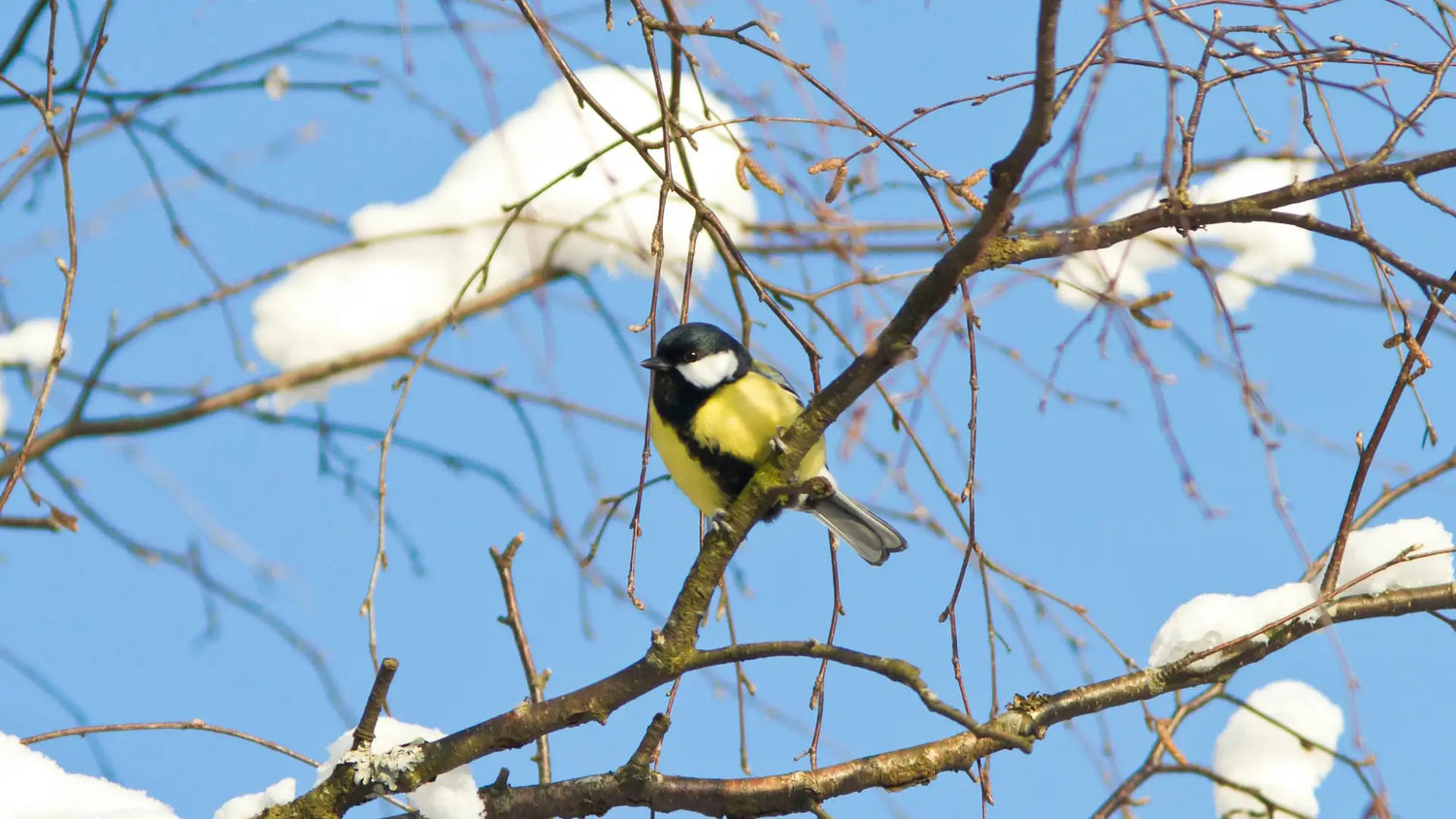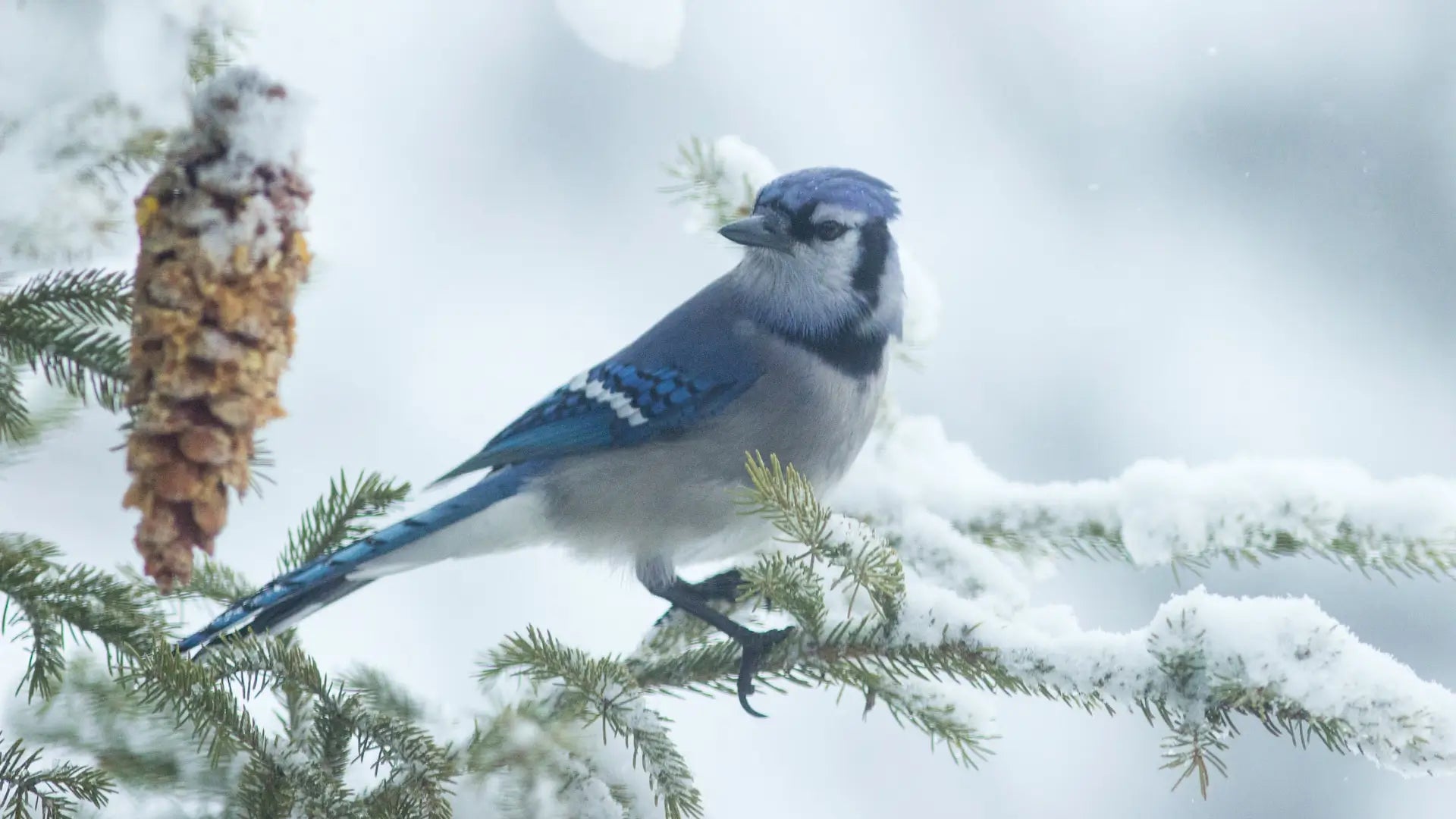Whether birds utilize solar energy in the winter is an interesting question.
The gentle tread of winter brings colorful changes to our feathered friends. These changes act as nature's magic, allowing them to put on new outfits and prepare for the winter cold.
As the seasons change, the internal rhythms of our bird friends begin to quietly change. Like clockwork, they adjust their physiology and behavior with precision. Migration, breeding, singing, finding mates, fattening up, changing feathers, all of these activities occur in an orderly fashion with the change of seasons.
To ensure that these changes occur at the most opportune seasons, they need a magical power to guide them. This power comes from the environmental cues they perceive. The intensity of the sun, the length of daylight, are all secrets to their ability to sense seasonal changes.
Let's look forward to the beautiful changes brought about by our feathered friends during this cold season! They are like nature's elves, showing us the rhythm and power of life in a unique way.

Solar Decisions
Living in the cold of winter and the heat of summer, these animals are faced with two choices: stay in the cold or travel long distances in search of warmth. Clever birds utilize a special "hibernation" technique, lowering their body temperature and metabolism during the cold nights in order to conserve energy and cope with the cold and food shortages. It's as if these animals are playing a game of survival, constantly searching for the right environment to survive.
To determine their position, birds and other animals rely on stable and consistent environmental factors, such as sunlight. The tilt of the Earth as it orbits the sun determines the amount of daylight. Near the equator, sunlight lasts about 12 hours a day, about the same all year round. However, as we move north or south, the length of day becomes shorter or longer, depending on the time of year.
In winter the days are shorter and the nights longer, sunlight becomes scarce and temperatures plummet. However, animals always find a way to adapt, showing the strength and wisdom of life.
Adaptation to Solar
So how do birds perceive the length of daylight? The answer lies in their eyes, or more accurately, the light-sensitive cells in their brains. Birds have thin skulls that light can penetrate. This creates an amazing light-monitoring system that connects different areas of the eye and brain.
Researchers experimented with artificial light to change the length of the day and night, to see if birds would "take the bait" and behave like they had shorter days in winter or longer days in summer if they prevented light from reaching their eyes or light-sensitive cells in the brain.
The biological clock in birds, synchronized with the daily amount of sunlight, helps them ensure that their physiology and behavior are in line with the seasons. Reproduction is the last priority in a bird's life. In order to conserve energy, their reproductive organs are reduced in size so as not to waste precious energy.
Winter is a challenge for birds to conserve energy and stay warm. They have to find a balance between the two to survive the cold season.
What Do Birds Do in Winter?
During the cold winter months, birds show endless ingenuity and adaptability. They either migrate to warmer places to enjoy bountiful food resources, or choose to hibernate in caves and tree holes, relying on their feathers and fat reserves to withstand the cold, while others continue to search for food in the same place, demonstrating their tenacious will to survive. In addition, some birds will undergo moulting, replacing their feathers with fuller ones to maintain their body temperature and flight ability. These survival strategies demonstrate the birds' ingenuity and survival instincts.

1. Reduce energy consumption
They rest an extra 3.5 to 5 hours during this bitterly cold season. Smart as cold jays and European starlings are, they also find opportunities to rest a little during the day to make up for the lack of sleep during the summer months.
And what's even more amazing is that birds also have an amazing ability to fall into deep sleep for short periods of time. This short period of deep sleep helps them lower their body temperature and metabolism to better cope with cold weather and limited food. Among them, the American Poor Bird utilizes this skill to its fullest extent. They go out of their way to fly from the western U.S. and Canada to the southern U.S. and Mexico just to find a good cactus to hibernate in for a few days. Researchers have found that they can even hibernate for as long as 45 days when the temperatures are cold and there is no sunlight!
This winter, let's enjoy how these clever and adorable birds skillfully deal with the cold!
2. Survival strategies
Increasing fat reserves is an effective strategy when faced with cold environments, but the amount of fat reserves needs to be moderate to avoid difficulties with flight and predator avoidance. Fat has a significant advantage in energy density, with 10 times the energy content of the same mass of carbohydrate and protein. Migratory birds rely on stored fat to fuel their migration, and their energy expenditure and replenishment strategies, including whether or not they stop to replenish their energy, travel continuously, or travel short distances, affect the accumulation of their fat reserves. Clearly, long-distance travel requires greater energy reserves.

Recent studies have revealed that poor Americans can successfully hibernate for 45 days when temperatures are cold and sunlight is lacking. However, storing fat is not the only strategy for surviving the winter. Some birds, such as black-crowned tits and tufted titmice, choose to rely on external storage of food to ensure their food supply throughout the winter, rather than relying on internal energy reserves. These birds are busy collecting and storing nuts, storing them on the ground or in tree cavities that resemble food pantries.
3. Solidarity
During the cold winter months, food shortages and the challenge of the cold are omnipresent. At this time, it is especially important to travel with like-minded partners. As the old saying goes, "Things come together in groups", which is not only a wisdom but also a survival strategy.
Winter is a time when many birds choose to work together in solidarity, because at this time of year, defending their territory is not their first priority. You can see tits flitting alongside small birds, warblers and woodpeckers, relying on each other to find food and protect themselves from the cold.
Joining such a group not only helps to get information about the best food sources, but also provides a common defense against the threat of predators. And monogamous birds like blue tits start looking for potential mates in the winter in preparation for the breeding season.
However, when the breeding season arrives, there may be some "cheating" between individuals that have met over the winter. In fact, it is quite common for 10-15% of chicks to have different fathers. This is perhaps one of the wonders of nature, full of unknowns and variables.
What You Can Do in Winter
As temperatures drop, birds need to get enough food to maintain body temperature and energy. Placing a variety of foods such as animal fats, seeds, peanuts, and dried mealworms in your backyard can provide energy and nutrients for your birds. At the same time, providing birds with shelter and a source of drinking water will protect their health and well-being. When caring for birds, care needs to be taken not to disturb their natural behavior and to protect them from predators. By providing the right food, water and protection, a comfortable and safe living environment can be created for birds.
Supporting birds' survival in winter is an important contribution to the natural ecosystem. By using the Smart Bird Feeder, you can easily provide food for them while enjoying the joy of observing their activities, becoming an integral part of the natural environment.





Leave a comment
All comments are moderated before being published.
This site is protected by hCaptcha and the hCaptcha Privacy Policy and Terms of Service apply.